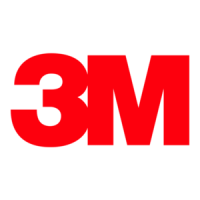EO Abator Operation and Installation Manual
2
Read, understand, and follow all safety information contained in these instructions prior to using the 3M EO Abator.
Retain these instructions for future reference.
Intended Use:
The 3M™ EO Abator is intended to remove ethylene oxide (EO) from the exhaust of 3M™ Steri-Vac™ Sterilizers and
Aerators. The EO Abator converts EO into carbon dioxide and water vapor through a heated catalytic process. Use with
other than 3M™ Steri-Vac™ Sterilizers and Aerators could lead to an unsafe condition.
Explanation of Signal Words and Symbols
Symbol Title Symbol Description and Reference
Caution Indicates the need for the user to consult the instructions for use for important
cautionary information such as warnings and precautions that cannot, for a variety
of reasons, be presented on the medical device itself. Source: ISO 15223, 5.4.4
Flammable Product is classied as ammable. Source: Globally Harmonized Symbols for
Classifying Hazardous Chemicals
Health hazard The product contains an ingredient classied as a health hazard. Source: Globally
Harmonized Symbols for Classifying Hazardous Chemicals
Warning, electricity To warn user to avoid coming into contact with electricity. Source: ISO 7010-W012
Follow instructions
for use
To signify that the instructions for use must be followed. Source: ISO 7010-M002
Caution, hot
surface
Indicates product can be hot and should not be touched without taking care.
Source: IEC 60417-5041
For more information see, HCBGregulatory.3M.com
WARNING
• To reduce the risk associated with hazardous voltage, which if not avoided, could result in death or
serious injury:
- Do not attempt to service and/or open the EO Abator.
- Service should only be performed by 3M Authorized Service Personnel.
• To reduce the risk associated with high temperature, which if not avoided, could result in death or serious
injury and/or property damage:
- Do not touch the exhaust lines or the immediate area around them.
- Do not place items next to the EO Abator. Follow clearance requirements listed in the Operation and
Installation Manual.

